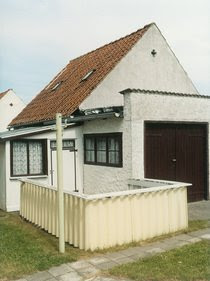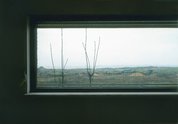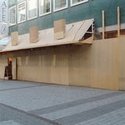John Hurrell – 19 March, 2009
The five photographers in the second half of this German show are so good I cursed myself for missing the first half. Superbly installed by its own globe trotting technician, this display is a remarkable flagwaver for German culture. The work is pristine, elegant, remarkably fresh and fastidiously hung. It looks as if the curator lived in Auckland instead of Munich, and had the L-shaped Bath St Gallery in mind right from the start.
Auckland
Presentation Representation Part 2
Curated by Thomas Weski of the Haus de Kunst (Munich). Toured by the IFA and Goethe Institut.
17 March - 28 March 2009
The five photographers in the second half of this German show are so good I cursed myself for missing the first half. Superbly installed by its own globe trotting technician, this display is a remarkable flagwaver for German culture. The work is pristine, elegant, remarkably fresh and fastidiously hung. It looks as if the curator lived in Auckland instead of Munich, and had the L-shaped Bath St Gallery in mind right from the start.
Weibke Loeper’s dozen Perspex mounted images look magnificent with no frames; the colour is oddly pure like lollies - vaguely piercing in its fruity, lickable intensity. The artist focuses on a small city (Wismar) where all the young people have gone, and shows us the streets and buildings’ exteriors. When we see a handful of people moving around the city centre and the toylike houses, they are all elderly. Everything is immaculately tidy with nothing unseemly anywhere.To Kiwi eyes it all seems rather surreal and dreamlike
Laurenz Bergan’s eight photographs are much larger, framed and all indoors - inside abandoned buildings that have been used by squatters, if at all. Everything is unloved and seedy but the squalor of the images is oddly appealing. The floors are covered with dead birds, cigarette butts, dust and feathers; children’s drawings provide a refreshing innocence on the grimy walls. The glimpses out through windows of the adjacent countryside are even more depressing than inside.
Heidi Specker’s ten images of a friend’s home and garden in Switzerland are really a cumulative portrait, using textures and odd portions of things to describe her friend. With bits of log cabins, patterned woolly jumpers, fungi close up, smooth glass windows, prickly pine needles and creaking ice, it is as if the images are not to be looked at but only felt by hand or cheek. The tactility provides a strange immediacy, something startlingly elemental.
One artist who avoided hanging pictures on the wall is Claus Goedicke. His photographs are printed into wallpaper which is pasted on inside the gallery. The seven images are incorporated on to a vertical green field with decorative filigrees of repeated crossed arms and hands, silhouettes of birds of prey, and alternating pink flowers. It’s a wonderfully strange way of exhibiting photographs, digitally processed of course - and adaptable for galleries with high studs.
The last artist is Uschi Huber. His nine C-prints record the actions of Cologne shop keepers just prior to the marching of any big parade through the city. They fit large sheets of plywood over all windows and doors to protect them from hooligans. The results are refreshingly beautiful with the patterned laminated wood lining the streets. The shops look like temporary movie sets before paint. Or an oddly scaled toy city made for children.
- John Hurrell





 Two Rooms presents a program of residencies and projects
Two Rooms presents a program of residencies and projects Advertising in this column
Advertising in this column



This Discussion has 0 comments.
Comment
Participate
Register to Participate.
Sign in
Sign in to an existing account.